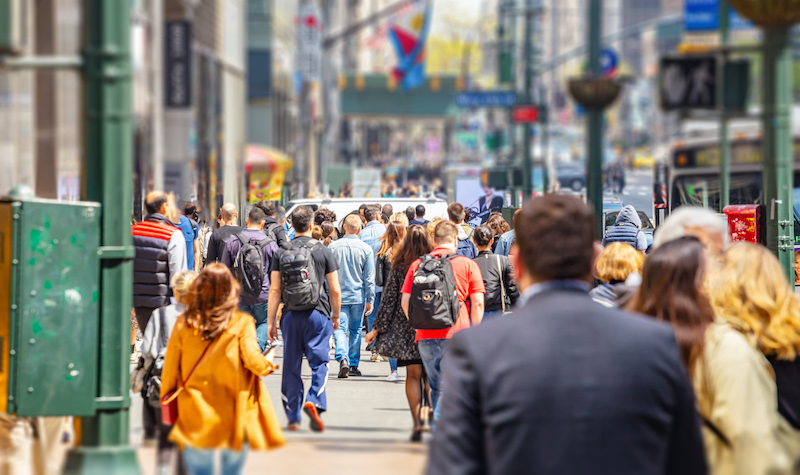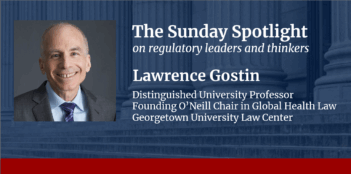
Traditional VSLs undervalue COVID-19 risks, but they can serve as a starting point for policymakers.
The COVID-19 pandemic requires policymakers at all levels of governance to make tragic tradeoffs between lives, health, and money. The value of a statistical life (VSL)—a tool that provides an estimate of the monetized social value of a single lost life—can help policymakers make these choices.
Although the VSL is a powerful tool for addressing difficult questions, policymakers should be aware of its limitations. In particular, policymakers should recognize that typical VSL calculations were not designed to address mortality or morbidity risks of the type that COVID-19 presents. More specifically, the VSL does not address deaths spread through close contagion, and the VSL structure does not even attempt to address non-deadly illnesses, no matter how debilitating they are.
As a result, VSLs are best used by pandemic policymakers as a starting point for determining which policies are cost-justified and for creating break-even scenarios to see which health facts would have to be true for a policy to make sense economically.
What policymakers should not do is use generic VSLs to undermine pandemic-protective policies. That is because traditional VSLs—which are approximately $10 million per life saved—almost certainly undervalue COVID-19 deaths in multiple ways, and possibly by several factors. This potential undervaluation has three root causes: the historical methodological choices that determine how VSLs are calculated, the special characteristics of COVID-19 deaths, and the potential for extraordinary COVID-19 morbidity.
Historical methodological choices that determine VSL calculation. VSLs are traditionally estimated by looking at how much money people pay to avoid—or are willing to accept—small increases in mortality risk. One common source of information is how much money people demand in wages to be exposed to higher risk of deadly injury at work. Most of these risks are small—in the realm of 1 in 10,000—and people are generally willing to give up about $1,000 to reduce a risk of this type and magnitude. Multiplying this out ($1,000 * 10,000 = $10 million) provides what economists consider the VSL.
One concern this structure raises is that it only measures how much money people are willing to pay to reduce small risks. When risks are larger—such as with COVID-19—these methods may underestimate how much money people would pay to avoid them.
Another serious concern, however, is the type of death risk being valued in these studies. Existing VSLs ignore cause of death, even as they rely primarily on data drawn from workplace injury. Aggregating deaths this way imbeds a presumption in VSL calculation that people are indifferent to how they die. Although making this assumption simplifies the calculation of VSLs, this assumption is also wrong. Most people care deeply about how they die; most people prefer, for example, painless deaths than to painful ones. In willingness to pay terms, most people then would be willing to pay more to avoid deaths from dreadful causes than from less dreadful ones. Some attempts to account for type of death in VSLs—for example, by adjusting VSLs upwards for “dreaded” deaths, such as deaths from cancers—have occurred, but they have yet to gain traction in the United States. The classic VSL—the $10 million per statistical life that most federal agencies use—does not incorporate any such premium.
Although there are practical reasons VSLs have historically been calculated this way, this standard method of valuation creates a potential pitfall when it comes to COVID-19 policies, which address a cause of death that is both gruesome and different from workplace injury.
The special characteristics of COVID-19 deaths. COVID-19 deaths are peculiarly bad both because of the dreadfulness of how people die and the tragedy of how they become ill. Note please, that those struggling with the virus now or with loved ones battling the disease may wish to skip to the next section—they are likely to be all too aware of how terrible the disease can be.
Many of the hundreds of thousands of Americans who die of COVID-19 will die alone in the eerie solitude of an intensive care unit, separated from loved ones, suffocated by their own lungs. Many others will die in nursing homes and hospices. Although individuals and societies vary in what they think of as a good death, research on risk perception suggest that risks that are novel and involuntary are particularly dreaded; suffocation and dying alone are other common terrors. COVID-19 deaths—caused by a novel and poorly understood disease, which is involuntarily and suddenly contracted, and which leads to deaths in a hospital or nursing facility separated from loved ones—are particularly dreadful. Consequently, applying generic VSLs to COVID-related deaths is likely to underestimate the total amount that people would be willing to pay to prevent such deaths.
A second critical characteristic of COVID-19 that is not addressed by existing VSL estimates stems from the traumatic social and personal impact of the the underlying virus’s close contagion. COVID-19 endangers not only us, but also those we love and care about. Even more cruelly, the disease makes each of us into a possible causal vector for our loved ones’ suffering or death.
Indeed, consistent with other infectious diseases, early studies suggest that people who catch COVID-19 are likely to be infected by a family member. Family events such as birthday parties or funerals have been documented as key vectors of spread, and large households are at particular risk. Perhaps ironically, robust social distancing may exacerbate the probability of such intra-familial spread; as contact with people outside the family unit is reduced, contact within the family unit may well increase.
People do not want the people they care most about to be harmed. Still less do people want to be the causal agent of that harm. Most people feel quite strongly about both of these preferences—yet existing VSL calculations do not even attempt to capture them. Indeed, to prevent the possibility of double-counting, traditional VSL calculations purposefully exclude third-party preferences, even where those preferences concern friends and family, and even when there is a perceived causal connection or fault connecting the risk and the valuer. Although this approach reduces the risk of double-counting, it increases the risk of neglecting situations where third-party preferences may be important—as where there is a sense of causal responsibility, or where the third party is someone near or close to the sick individual. Infectious diseases such as COVID-19 present a disturbing test for both of these qualities.
Regulators have struggled historically when faced with risks of this type. For example, the National Highway Traffic Safety Administration faced an analogous challenge when considering the costs and benefits of preventing a terrible form of accidental death—specifically, a small child being backed over and killed by a family car typically driven by the child’s parent. Rear-view cameras installed in new vehicles were effective at preventing this type of nightmarish death, however, mandating backup cameras would only have been cost-justified at about double the VSL that the agency had been using. The agency chose to move forward with the regulation anyway, citing what it called the “qualitatively distinct risk” of parents accidentally killing their own children.
Unfortunately, the agency then refused to monetize this risk further, and to my knowledge there is no preexisting calculation that can help guide policymakers in thinking about just how much more people are willing to pay to avoid the horror of accidental death. The absence of a calculation is a particular pity now, when such risk hangs over many individuals who face the tragedy of feeling that they are the cause of infecting—even killing—the people who are most important to them.
Policymakers should recognize the distinct qualities of coronavirus deaths because they affect how aggressively the government should seek to protect people from such deaths. Traditional VSLs are simply not designed to capture, or even to inform, the question of how much should be spent to avoid the type of trauma COVID-19 presents. As a result, generic VSL estimates are likely to undervalue the anguish coronavirus deaths produce.
The potential for extraordinary COVID-19 morbidity. Policymakers should also recognize that VSLs address lives lost—and only lives lost. Although no VSL attempts to capture morbidity impacts, and even though health economists have developed other methods for quantifying illness and suffering, in typical public policy contexts with substantial death risks, the mortality effects swamp morbidity risks. People will pay money to avoid becoming sick, but they will pay a good deal more to avoid dying. In effect, it takes many severe illnesses to equal the monetized value of a single death. As a result, policymakers can often feel reasonably comfortable using mortality impacts to answer key questions about how much social investment is cost-justified.
But this pattern may prove misleading where morbidity burdens are extraordinarily grave. And looming indicators suggest that the novel coronavirus’s morbidity burden may be severe. COVID-19 may turn out to be the unusual case where morbidity impacts nearly equal even enormous mortality impacts. Early reports show that COVID-19 causes long-term damage in many allegedly recovered patients—as many as a third of even “mild” COVID-19 patients are currently known to have lingering illness and health problems. Such long-lasting health impacts are damaging on their own and may also substantially change the demographics and vulnerability of a population affected by the disease.
Just how large might the quantifiable impacts of COVID-19 morbidity be? Although additional work on this question is desperately needed, even a few quick estimates illustrate that the effects of COVID-19 morbidity may actually equal the mortality impacts. Imagine that COVID-19 has a one percent mortality rate and leaves another 20 percent of survivors with chronic health issues. If those health issues are valued at $500,000 a case—a value the U.S. Environmental Protection Agency has used for cases of chronic bronchitis—then for every person killed by the disease, there will be $10 million of additional morbidity impacts (20 * $500,000). A policymaker who ignored morbidity and used a $10 million VSL as even a quick estimate of the monetized health impacts of a policy would underestimate the actual benefit of the policy by half.
* * *
In this pandemic, policymakers need all the help they can get in the terrible task of trading off lives, health, and money. VSLs can provide some help in that task, and policymakers should use them at all levels of governance as a valuable starting point for identifying policies that are cost-justified. But policymakers should also recognize that VSL estimates do not—and do not even try to—capture some of the most hideous aspects of COVID-19 deaths and associated health impacts. As a result, policymakers should beware if the use of generic VSLs should lead them to reject protective policies that may address the dreadful, traumatic, and wide-ranging impacts of COVID-19.
This essay is part of a series entitled Analyzing COVID-19 Policymaking.




